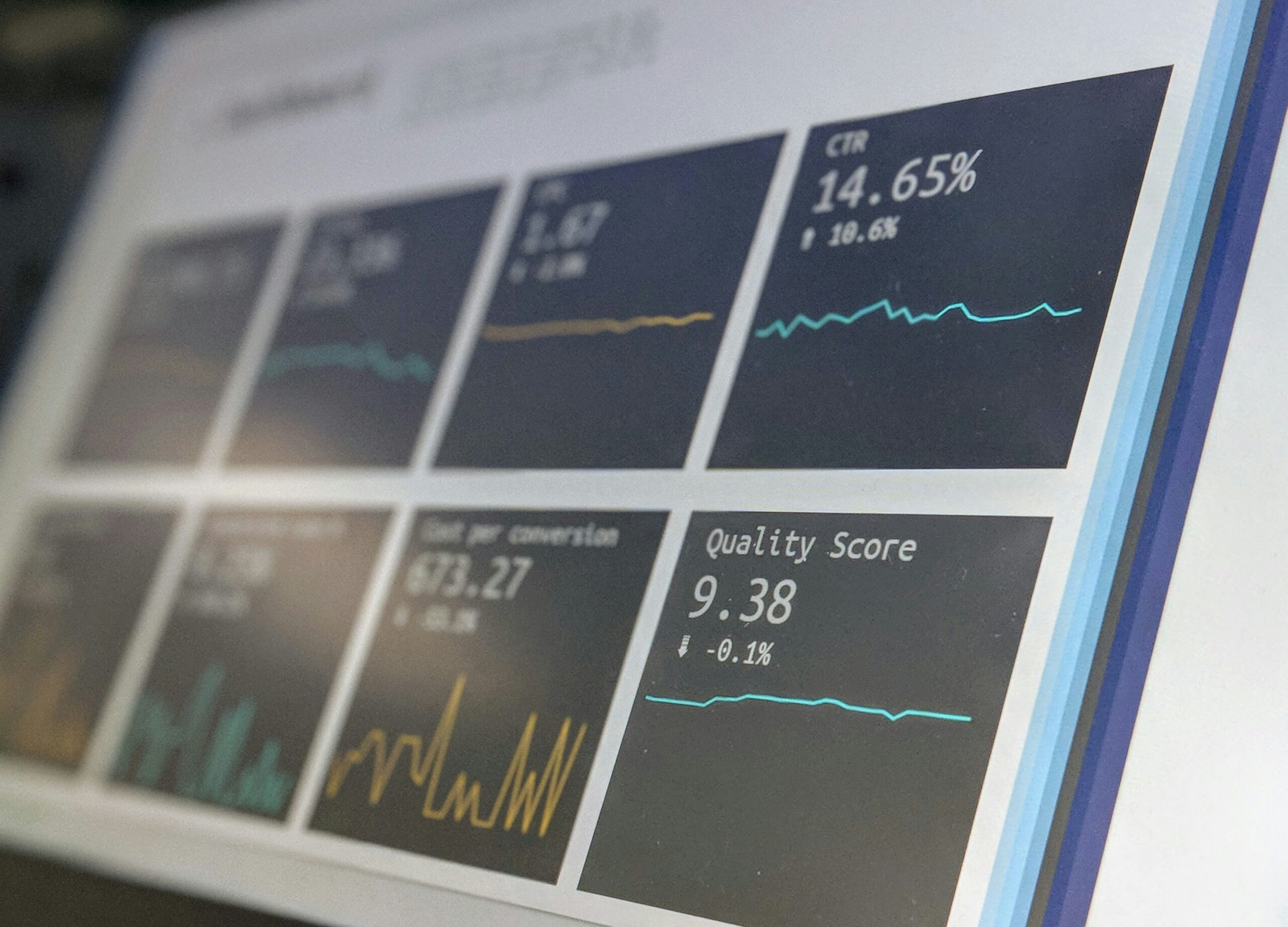No products in the cart.
Understanding Supply and Demand: The Heart of Economic Theory
Introduction to Supply and Demand
Supply and demand are fundamental concepts that form the basis of economic theory, illustrating how the interaction between buyers and sellers determines the market prices and quantities of goods and services. Understanding these concepts is essential for grasping broader economic principles, as they play a crucial role in shaping the economic landscape. The law of demand states that, all else being equal, an increase in the price of a good will lead to a decrease in the quantity demanded by consumers. Conversely, as prices fall, demand typically increases. This relationship creates a downward-sloping demand curve when graphed.
On the other hand, the law of supply posits that, ceteris paribus, higher prices incentivize producers to supply more of a good or service, leading to an upward-sloping supply curve. As prices rise, firms are willing to increase production to capitalize on potential profits. The interaction of these two curves establishes the equilibrium price—the point where the quantity supplied matches the quantity demanded. When market conditions shift, such as during economic growth or downturns, the equilibrium can change, affecting prices and availability.
The significance of supply and demand extends beyond mere price determination; they are integral to economic growth and the overall efficiency of a market economy. For instance, as consumer preferences shift or technological advancements occur, both supply and demand curves may shift, leading to new market equilibriums. Policymakers, businesses, and economists continuously analyze these shifts to devise strategies that foster sustainable economic development. Understanding supply and demand not only aids in comprehending current market dynamics but also equips individuals to better navigate the complexities of the economy.
What is Supply?
Supply is a fundamental concept in economic theory, specifically referring to the quantity of goods or services that producers are willing and able to sell at various prices. It is an essential component of market dynamics, influencing how resources are allocated in an economy. The relationship between supply and price can often be described as directly proportional; as the price of a good or service increases, producers are generally more inclined to supply a greater quantity, aiming for higher revenues. Conversely, as prices decrease, the willingness to supply may also diminish.
Several factors significantly influence supply levels in an economy. One of the primary determinants is production costs, which encompass all expenses incurred in the creation of goods or services. If production costs rise, perhaps due to increased prices for raw materials or labor, producers may reduce their supply, which can ultimately impact overall economic growth. Conversely, if production becomes more efficient or if technology innovations lead to lower costs, the supply may increase, fostering a more competitive market environment.
Additionally, technological advancements can have a profound effect on supply. For example, improved machinery or better production methods can enable manufacturers to create more goods at a reduced cost. This increase in efficiency often translates to larger quantities of supply entering the market, which can stimulate economic growth by satisfying consumer demand. Another factor is producers’ expectations regarding future prices. If a producer anticipates that prices will rise in the near future, they may hold back their current supply to capitalize on higher future sales. Likewise, if they expect prices to fall, they may increase supply to avoid losses.
Understanding Demand in Economic Theory
Demand is a fundamental concept in economic theory, representing the quantity of goods or services that consumers are willing and capable of purchasing at various price levels. It is essential to comprehend that demand is not solely based on the desire for a product; it also encompasses the financial ability to acquire it. This distinction is what separates demand from mere want. Understanding demand is pivotal for analyzing how markets operate, which can, in turn, influence overall economic growth.
Several factors significantly impact demand dynamics. Firstly, consumer preferences play a critical role. Changes in tastes or trends can lead to fluctuations in demand for specific products. For instance, if a new health trend emerges that highlights the benefits of organic food, the demand for organic produce may spike, impacting inventory and pricing strategies within the market.
Income levels also exert considerable influence on demand. As individuals or households experience increases in disposable income, they are generally more inclined to purchase luxury items or services that they may have previously deemed unattainable. Conversely, if economic downturns occur and income levels decline, consumers often revert to purchasing essential items, thereby reducing demand for non-essential goods. This behavior exemplifies how economic stability can affect demand patterns across different sectors.
Furthermore, the prices of related goods, including substitutes and complements, can alter overall demand. For example, an increase in the price of coffee may lead consumers to seek tea as an alternative, enhancing the demand for tea while simultaneously decreasing it for coffee. Understanding these relationships is critical for businesses seeking to optimize their offerings and navigate the complexities of changing market conditions.
In summary, demand plays a vital role in the economic ecosystem, with multiple factors influencing consumer behavior and buying decisions. By grasping the nuances of demand, individuals and businesses can better anticipate changes in market dynamics, ultimately contributing to informed decision-making and sustained economic growth.
The Law of Supply and Demand
The Law of Supply and Demand is a fundamental principle that serves as the cornerstone of economic theory. It articulates the interrelationship between the quantity of goods available in the market and the consumer’s desire for those goods. According to this law, when the quantity supplied of a good or service increases while demand remains constant, prices tend to decrease. Conversely, if supply diminishes and demand stays the same, prices are likely to rise. This dynamic helps to explain how various factors influence market equilibrium, ultimately contributing to economic growth.
To illustrate this principle, consider the market for smartphones. If a new model is launched and manufacturers increase production significantly, the supply of these smartphones in the market rises. If consumer interest remains unchanged, the surplus of smartphones may force companies to reduce prices to stimulate sales. This phenomenon demonstrates that an influx in supply, devoid of an equivalent rise in demand, can lead to lower prices. Conversely, if a popular smartphone model is discontinued and the existing stock is limited, while demand continues to surge, prices may escalate due to scarcity. This scenario underpins the importance of supply dynamics in influencing market conditions and consumer behavior.
Graphically, the relationship between supply and demand can be depicted with two curves on a graph. The supply curve generally slopes upward, indicating that higher prices motivate producers to offer more goods. In contrast, the demand curve slopes downward, signifying that lower prices encourage consumers to buy more. The intersection of these two curves defines the market equilibrium, where the quantity supplied matches the quantity demanded. Thus, fluctuations in either supply or demand directly affect prices and, subsequently, the broader impacts on economic growth.
Microeconomics Overview
Microeconomics is a vital branch of economics that delves into the intricate behaviors of individual consumers and firms within specific markets. Its primary focus lies in understanding how these entities make decisions regarding resource allocation, which subsequently influences pricing strategies and product availability. By analyzing small economic units, microeconomics provides insights that are essential for grasping larger economic trends, including overall economic growth.
At its core, microeconomics examines the dynamics of supply and demand as they interact within various markets. The concept of supply refers to the quantity of goods and services that producers are willing to offer at different price levels, while demand signifies the quantity that consumers are willing and able to purchase. The interplay between these forces dictates the market equilibrium, influencing pricing and ultimately affecting consumer behavior. Consequently, when assessing economic growth, microeconomic factors can provide critical insights into how individual market activities contribute to broader economic development.
Microeconomic analysis also involves studying production decisions made by firms. These decisions encompass determining the optimal combination of resources to produce goods efficiently while minimizing costs. The efficiency in production not only benefits individual firms but also resonates throughout the economy, allowing for better prices and availability of resources for consumers. Furthermore, consumer purchasing behavior serves as a crucial element in this analysis. Understanding what drives individuals to make purchasing choices helps firms strategize their marketing efforts and product offerings, thereby enhancing market competitiveness.
In conclusion, microeconomics serves as a foundational element in understanding economic systems, focusing on individual decisions that collectively influence broader economic growth. By studying consumer behavior and firm operations, microeconomics provides a clearer picture of how resource allocation decisions have a lasting impact on markets and economies at large.
Macroeconomics Overview
Macroeconomics is a branch of economics that focuses on understanding the behavior and performance of an economy as a whole, rather than delving into specific markets or individual behaviors. This holistic approach examines the aggregate indicators that influence the overall economic landscape, including key factors such as inflation, unemployment, and economic growth. By analyzing these components, macroeconomic theory aims to explain how they interact with one another and their implications for supply and demand.
One of the primary components of macroeconomics is inflation, which refers to the sustained increase in the general price level of goods and services. Rising prices can erode purchasing power, which in turn affects demand. Central banks and governments often implement policies to manage inflation, seeking a balance that promotes economic stability. Through the manipulation of interest rates and money supply, these authorities can influence economic growth and demand levels significantly.
Unemployment is another critical aspect of macroeconomic analysis. High unemployment indicates that a significant portion of the workforce is not engaged in economic activity, which can lead to decreased demand for goods and services. Conversely, low unemployment is commonly associated with increased consumer spending, stimulating economic growth. Policymakers strive to implement strategies that reduce unemployment rates, recognizing that a robust labor market fosters demand, which is essential for a thriving economy.
Furthermore, government policies play a crucial role in shaping economic growth. Instruments such as fiscal policy, which involves government spending and tax adjustments, can have profound effects on aggregate demand. By investing in infrastructure or providing tax incentives, governments can stimulate economic activities, leading to higher levels of demand and ultimately influencing economic growth. Understanding the interplay between these macroeconomic elements is vital for comprehending the broader economic forces that drive supply and demand in any economy.
Interplay Between Supply, Demand, and Economic Theories
The interaction of supply and demand forms the cornerstone of economic theory, influencing both microeconomic and macroeconomic perspectives. Microeconomics focuses on the behavior of individual consumers and firms, analyzing how they make decisions regarding the purchase of goods and services. In this realm, the equilibrium price is established at the intersection of supply and demand curves, meaning that any shift in these curves—whether due to changes in consumer preferences, production costs, or external factors—can have immediate implications on market dynamics and, consequently, economic growth.
Macroeconomics, on the other hand, examines overall economic phenomena and aggregates, such as national income, inflation rates, and unemployment. Here, the principles of supply and demand take on broader significance, informing governmental policy decisions regarding fiscal and monetary regulations. For instance, during periods of economic downturn, governments may adopt strategies to stimulate demand through increases in public spending or adjustments in interest rates, thereby fostering economic growth and recovery.
The relationship between supply, demand, and economic theories extends into the realm of public policy, where policymakers strive to balance these forces to create favorable economic conditions. Understanding how these elements operate not only aids in the development of effective economic policies but also enhances overall market efficiency and social welfare. As shifts in supply and demand continue to shape industries and economies, the role of economic theories remains vital in guiding responses to these changes.
Ultimately, as the study of supply and demand unfolds, it becomes clear that these foundational concepts are essential for grasping the complexities of economic theories. By analyzing how they interact and influence various economic outcomes, one can appreciate their significant role in shaping both micro-level interactions and broader macroeconomic policies.
Real-World Applications of Supply and Demand
Supply and demand are fundamental concepts in economics, shaping the marketplace and influencing the behavior of consumers and producers. Understanding real-world applications of these principles allows for the analysis of various markets and the examination of how dynamic adjustments affect prices, availability, and economic growth.
One notable example can be seen in the housing market. When demand for homes increases—perhaps due to population growth, low-interest rates, or increased consumer confidence—prices tend to rise. Conversely, if a significant number of homes are built or if economic growth slows, supply may outstrip demand, leading to lower housing prices. This fluctuation exemplifies how supply and demand interrelate and affect market equilibrium.
The automotive industry provides another case for study. As consumer preferences shift towards electric vehicles, manufacturers must adapt their supply chains accordingly. Increased demand for environmentally friendly cars has prompted substantial investments in production capabilities, thereby shifting the supply curve. This adjustment not only affects prices but also stimulates economic growth in related sectors, such as battery production and charging infrastructure.
Additionally, supply and demand dynamics can be observed in the agricultural sector. Weather patterns, for example, can dramatically impact the supply of crops. A good harvest increases supply, leading to lower prices, while poor weather conditions can decrease supply, raising prices and prompting concerns about food scarcity. These shifts reflect the crucial role that supply and demand play in determining not only price levels but also the availability of essential goods.
Through these examples, it becomes evident that supply and demand significantly influence market behavior across various industries. As economies evolve and consumer preferences change, the interplay of these two forces will continue to shape economic growth and the overall state of markets worldwide.
Conclusion and Implications for Future Economic Trends
Understanding the principles of supply and demand is crucial for grasping the mechanics of economic growth. Throughout this discussion, we have explored how these foundational concepts interact to shape markets, drive prices, and influence consumption patterns. The relationship between supply and demand dictates not just immediate market behaviors, but also long-term economic trends.
The dynamics of supply and demand can vary considerably based on numerous factors including changes in consumer preferences, technological advancements, and shifts in the global economy. As we look to the future, it’s essential to consider how these factors will impact economic growth. For instance, increased sustainability practices and the rising emphasis on the digital economy are likely to alter traditional supply chains, potentially leading to changes in pricing and availability of goods and services. Similarly, demographic shifts can dictate variations in demand, influencing everything from housing markets to consumer goods.
Moreover, global events such as economic downturns, pandemics, and changes in trade policies introduce unpredictability into these dynamics. Understanding supply and demand equips economists and policymakers with the analytical tools necessary to forecast political and economic outcomes. As we navigate through these changes, we must remain vigilant to the lessons learned from supply and demand interactions, utilizing them to foster a resilient and responsive economic framework.
In conclusion, the principles of supply and demand remain at the core of economic theory, guiding our understanding of financial markets and informing future strategies for economic growth. As we embrace technological advancements and respond to evolving market conditions, a reaffirmed understanding of these principles will be vital for adapting to the complexities of the modern economy.






















![A Comprehensive Review of [Course/Product/Experience Name] 22 man in gray shirt sitting on black chair](https://theamericansidehustle.net/wp-content/uploads/2025/03/man-in-gray-shirt-sitting-on-black-chair-1-scaled.jpg)














































































